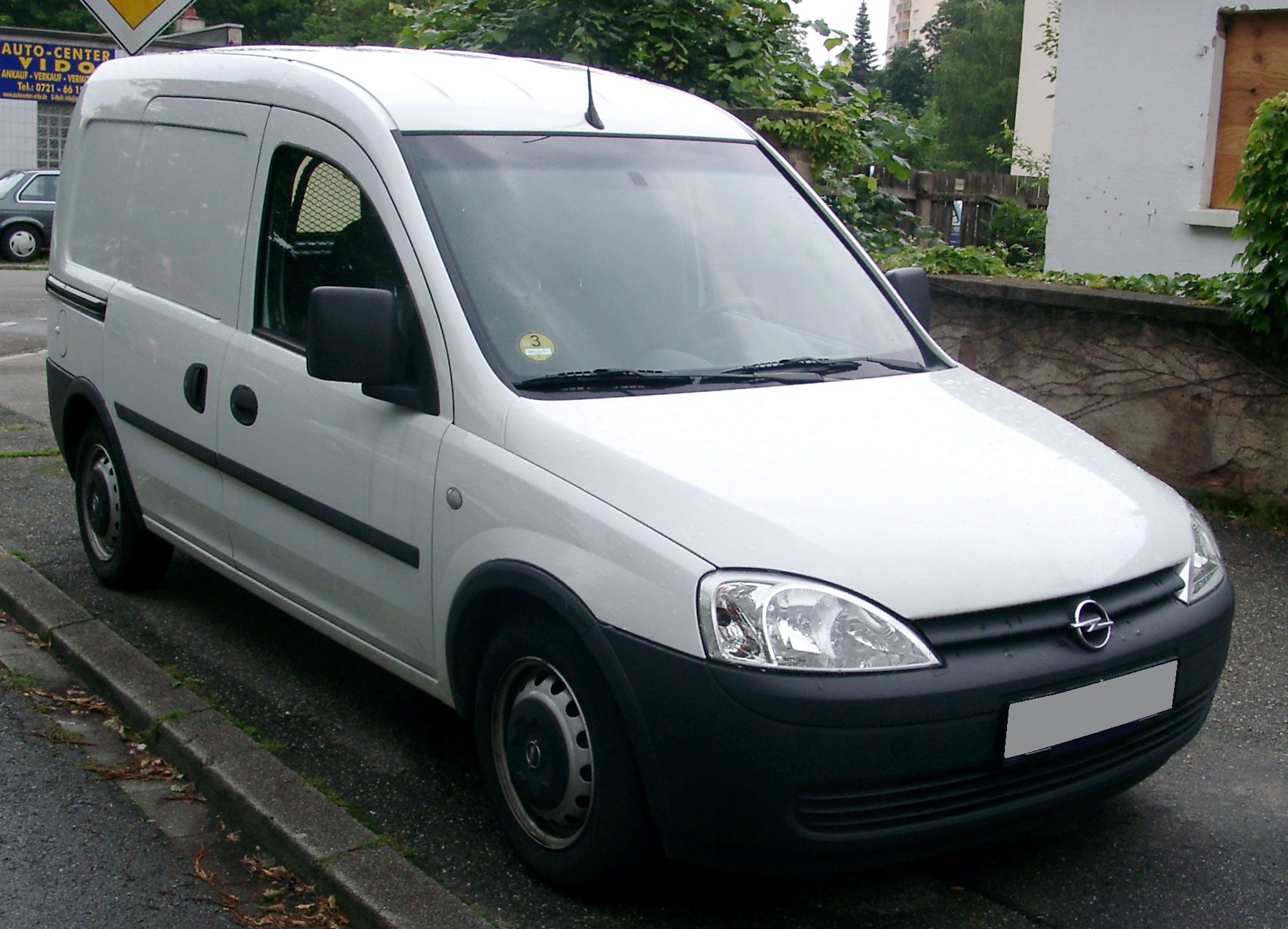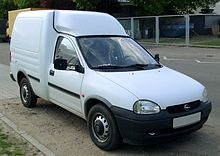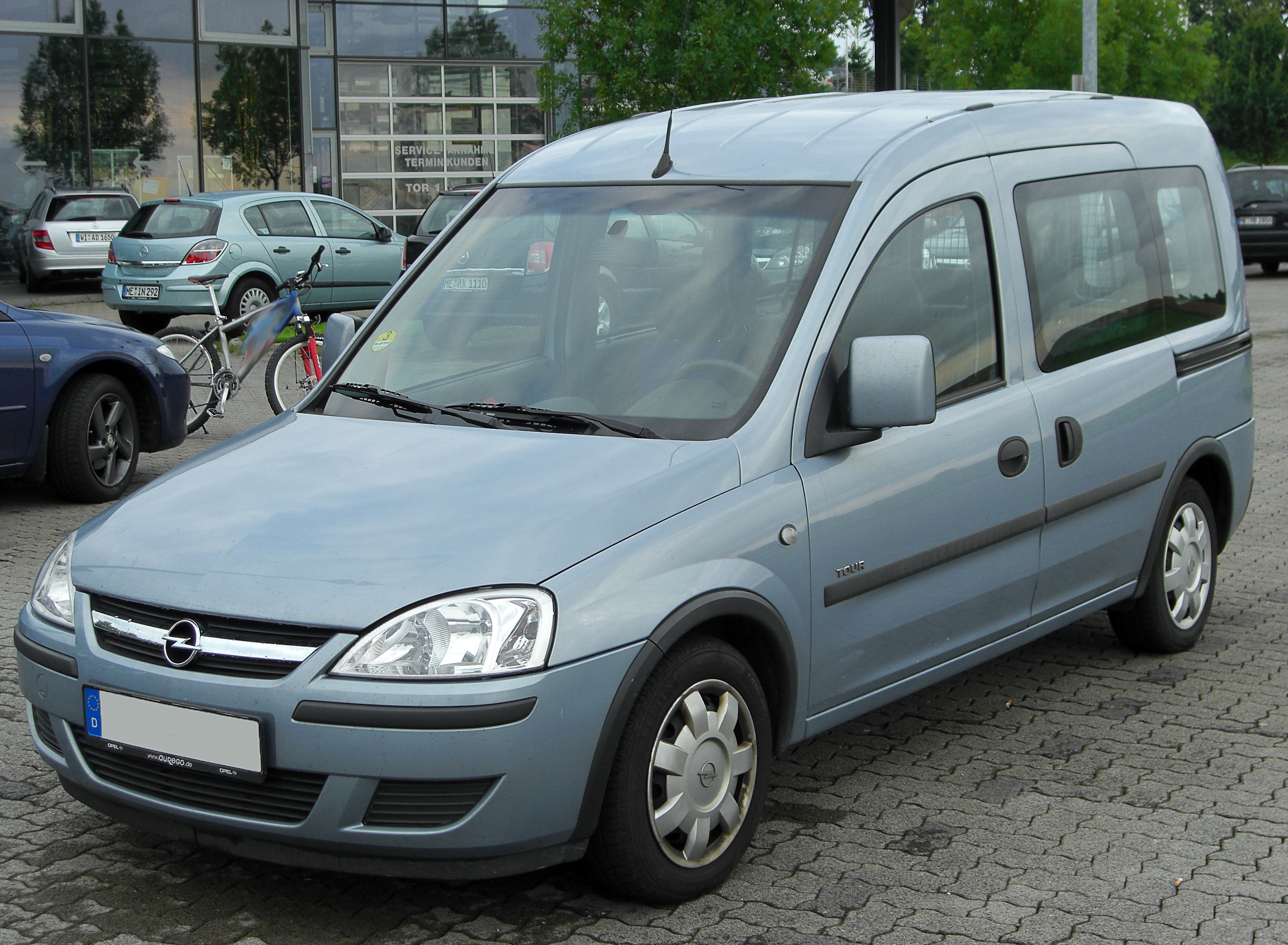Opel Combo
The Opel Combo is the name of various commercial vehicle generations of the Opel brand.
The first two generations were panel van variants from the Kadett E and Corsa B. The third generation is a MPV based on the Opel Corsa C. Since autumn 2011, the year before introduced Doblò II is sold by Opel as the fourth generation of the Opel Combo (so-called badge engineering).
In Australia and New Zealand, the Opel Combo is sold as a Holden Combo, in the UK as the Vauxhall Combo, in Chile as Chevrolet combo.
Model series
Kadett Combo ( Combo A) ( 1986-1993 )
For the first time the model name Opel Combo was introduced in a van that was based on the Opel Kadett E. It was built from January 1986 to August 1993, surpassing the construction of his platform provider. In contrast to the cadet he possessed at the rear leaf springs, which allowed a higher payload.
Combo B (1993-2001)
The presented in October 1993 Opel Combo B, based on the Opel Corsa B, has as its predecessor only two seats in the open back cab. He also has a closed box body with two double doors in the rear, which can be opened to almost the entire width and height of the cargo space.
1995 Combo Tour with a second seat and windows, was also introduced at the rear part of the vehicle.
The combo was there with a petrol and a diesel engine. The gasoline engine had a displacement of 1389 cm ³ and made 44 kW. Its permissible gross weight was 1620 kg, while its curb weight was 1130 kg.
The end of 2001 the production was stopped.
Combo C (2001-2011)
In July 2001, the Combo C is based on the Corsa C on the market. As a fully glazed van for the private market, which is recognizable by the chrome strut on the grill, it is called Combo Tour.
The intended for commercial use MPV with partial glazing sold panel van only under the name combo and the van under the name combo. The combo is 1684 mm wide. Due to the width of the cargo area between wheel arches of 1107 mm, the Combo C can transport only a Euro pallet.
Together with the Corsa C was the combo in the summer of 2003 in the non-commercial version of a minor facelift, including the Opel - typical chrome strut was widened in the grille and the front bumper designed new.
The combo has been built since the beginning of 2007 the factory Saragossa ( Zaragoza, Spain ), whereas the production after the closure of the manufacturing plant in Azambuja (Portugal ) was laid.
The offer of the Combo Tour was set in October 2010, as the model can not meet the required from 2011 Euro 5 emissions standards for cars. As the van Combo C ran until January 2011.
Number of cylinders
1Wert for 5-speed EasyTronic
Combo D ( since 2011 )
Opel Combo Combi ( since 2011 )
Fiat and General Motors had agreed that Fiat will supply a range of vans and MPV model variants to General Motors from autumn 2011, which distribute them among their regional brand Opel.
The new Opel models are based on the platform of the Fiat Doblò II and how this in Tofaş plant in Bursa, Turkey, made . Dimensions and wheelbase correspond exactly to the Fiat models, since the combo versions are identical to the Fiat models up on the bumper and brand emblems.
The Combo D there as its predecessors in two versions: as cars and vans, which is again called " van ". As vans is available the Combo D with two wheelbases and two roof heights. The load volume ranges from 3.8 m³ with a car, to 4.6 m³ in the van, payload up to one tonne and has been in the short version accommodates two Euro pallets. In the passenger car variant, there is the combo with five or seven seats.
In trading the combo D came on 14 January 2012.
To launch the combo D is with a gasoline engine and four diesel engines with a power range from 66 kW (90 hp) to 99 kW (135 hp). Even the natural gas version is available.
Opel Combo van ( since 2012 )

_%2525E2%252580%252593_Frontansicht,_5._September_2012,_Wuppertal.jpg)

_%2525E2%252580%252593_Frontansicht,_18._M%2525C3%2525A4rz_2012,_Wuppertal.jpg)






